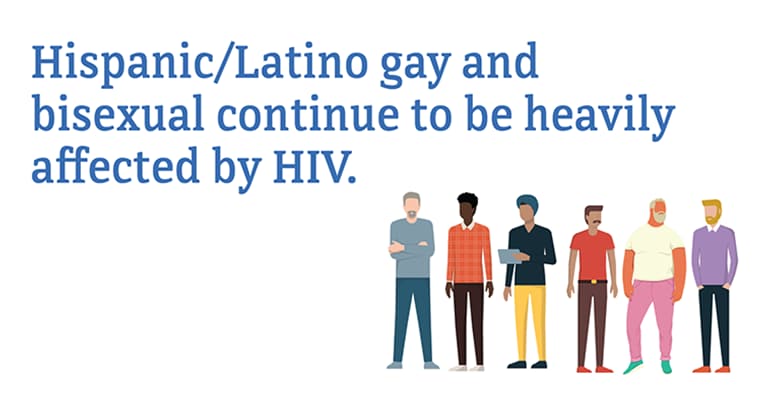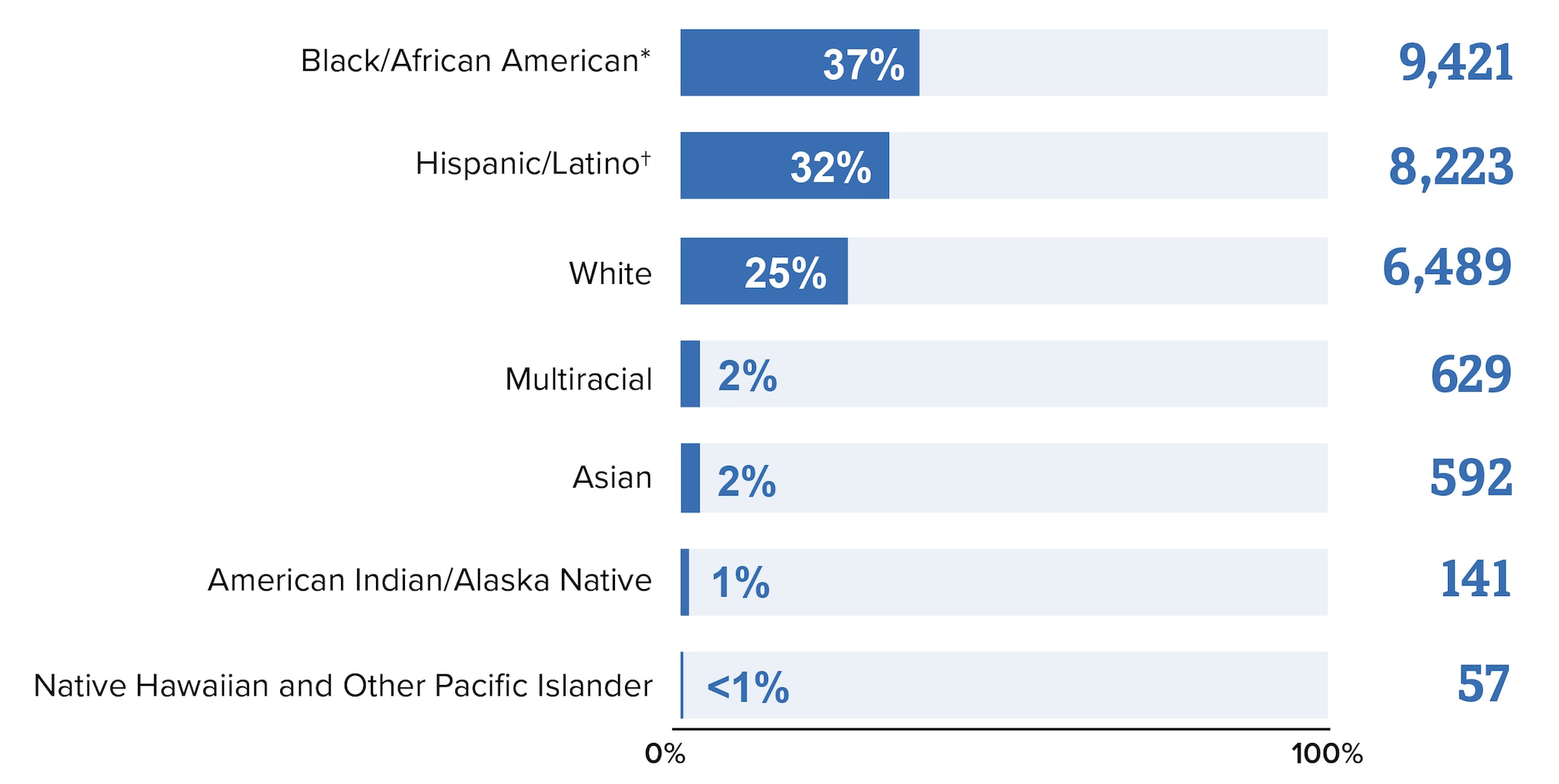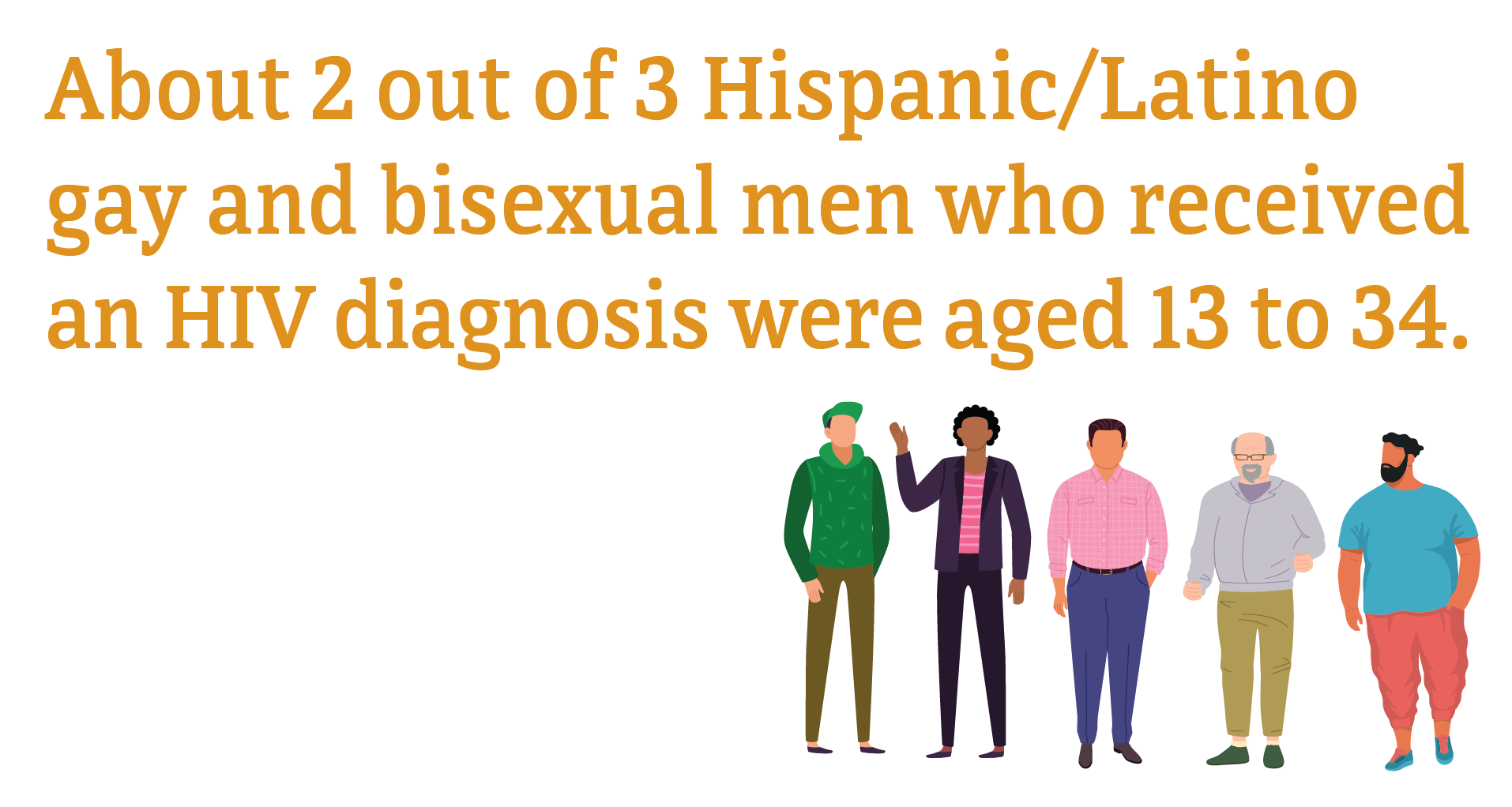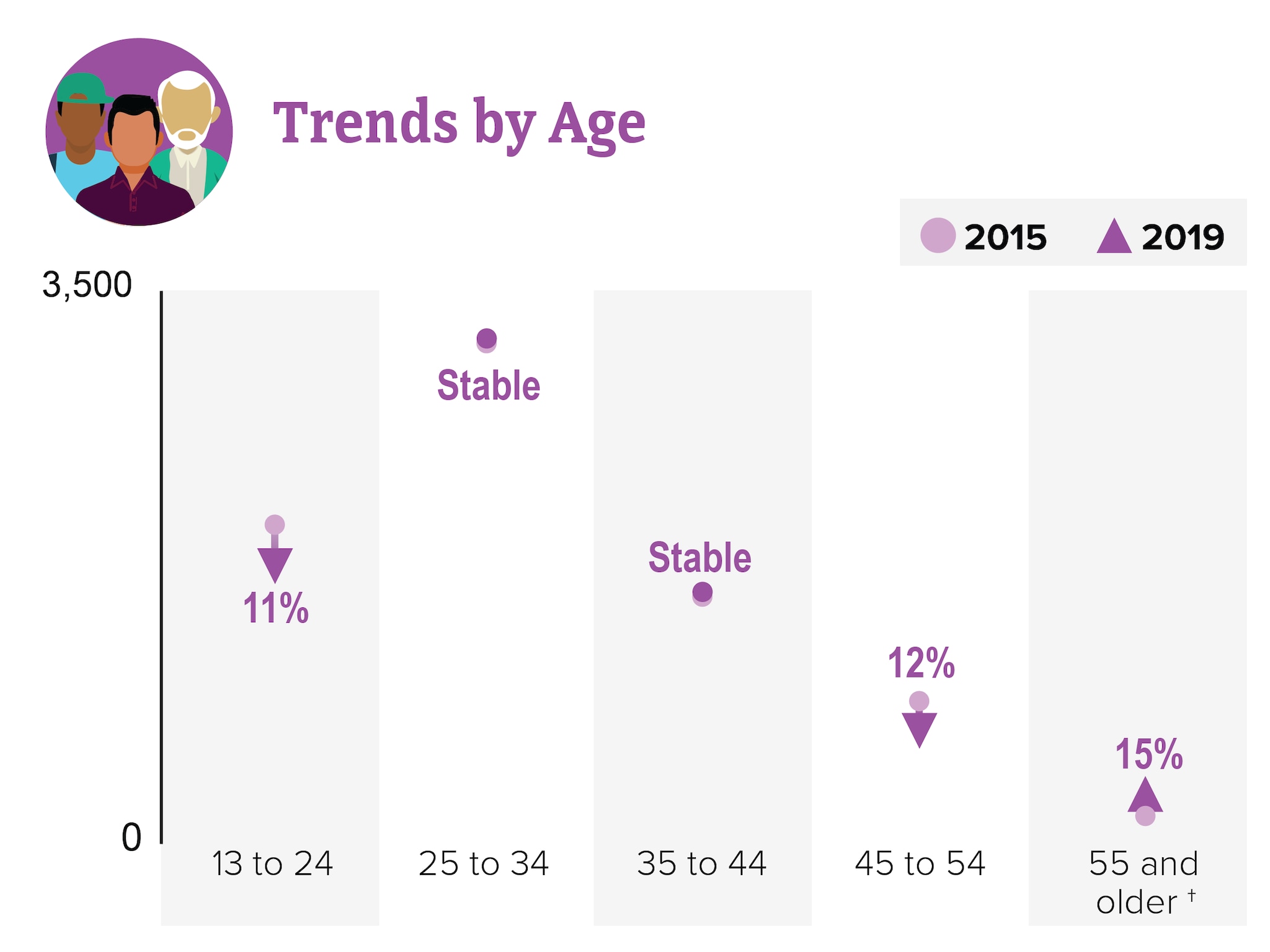HIV and Hispanic/Latino Gay and Bisexual Men: HIV Diagnoses
Data for 2020 should be interpreted with caution due to the impact of the COVID-19 pandemic on access to HIV testing, care-related services, and case surveillance activities in state and local jurisdictions. While 2020 data on HIV diagnoses and prevention and care outcomes are available, we are not updating this web content with data from these reports.
HIV diagnoses is one of the six Ending the HIV Epidemic in the U.S. indicators. HIV diagnoses refers to the number of people who received an HIV diagnosis during a given year. In 2019, Hispanic/Latino gay and bisexual mend made up 22% (8,223) of the 36,801 new HIV diagnoses in the US and dependent areas.e




* Black refers to people having origins in any of the Black racial groups of Africa. African American is a term often used for people of African descent with ancestry in North America.
† Hispanic/Latino people can be of any race.
Source: CDC. Diagnoses of HIV infection in the United States and dependent areas, 2019. HIV Surveillance Report 2021;32.


NOTE: Total may not equal 100% due to rounding.
* Hispanic/Latino people can be of any race.
Source: CDC. Diagnoses of HIV infection in the United States and dependent areas, 2019. HIV Surveillance Report 2021;32.
From 2015 to 2019, HIV diagnoses remained stable among Hispanic/Latino gay and bisexual men overall. Although trends varied by age, HIV diagnoses decreased 11% among young Hispanic/Latino gay and bisexual men aged 13 to 24.

* Hispanic/Latino people can be of any race.
† Changes in subpopulations with fewer HIV diagnoses can lead to a large percentage increase or decrease.
Source: CDC. Diagnoses of HIV infection in the United States and dependent areas, 2019. HIV Surveillance Report 2021;32.
a Hispanic/Latino people can be of any race.
b The term male-to-male sexual contact is used in CDC surveillance systems. It indicates a behavior that transmits HIV infection, not how individuals self-identify in terms of their sexuality. This web content uses the term gay and bisexual men to represent gay, bisexual, and other men who reported male-to-male sexual contact.
c Unless otherwise noted, data in this web content are for adults and adolescents aged 13 and older.
d Includes infections attributed to male-to-male sexual contact and injection drug use (men who reported both risk factors).
e American Samoa, Guam, the Northern Mariana Islands, Puerto Rico, the Republic of Palau, and the US Virgin Islands.
- CDC. Diagnoses of HIV infection in the United States and dependent areas, 2019. HIV Surveillance Report 2021;32.
- CDC. Estimated HIV incidence and prevalence in the United States, 2015–2019. HIV Surveillance Supplemental Report 2021;26(1).
- CDC. Monitoring selected national HIV prevention and care objectives by using HIV surveillance data—United States and 6 dependent areas, 2019. HIV Surveillance Supplemental Report 2021;26(2).
- CDC. Barriers to antiretroviral therapy adherence among HIV-positive Hispanic and Latino men who have sex with men—United States, 2015–2019. MMWR 2020;69(40):1437-42.
- CDC. HIV infection risk, prevention, and testing behaviors among men who have sex with men—National HIV Behavioral Surveillance, 23 U.S. cities, 2017. HIV Surveillance Special Report 2019;22.
- CDC. HIV care outcomes among men who have sex with men with diagnosed HIV infection—United States, 2015. MMWR 2017;66(37):969-74.
- Crepaz N, Mullins M, Higa D, Gunn J, Salabarría-Peña Y. A rapid review of disparities in HIV prevention and care outcomes among Hispanic/Latino men who have sex with men in the United States. AIDS Educ Prev 2021; 33(4):276-89. PubMed abstract.
- McCree DH, Walker T, DiNenno E, et al. A programmatic approach to address increasing HIV diagnoses among Hispanic/Latino MSM, 2010-2014. Prev Med 2018;114:64-71. PubMed abstract.
- CDC. Behavioral and clinical characteristics of persons with diagnosed HIV infection—Medical Monitoring Project, United States, 2020 cycle (June 2020–May 2021). HIV Surveillance Special Report 2022;29.